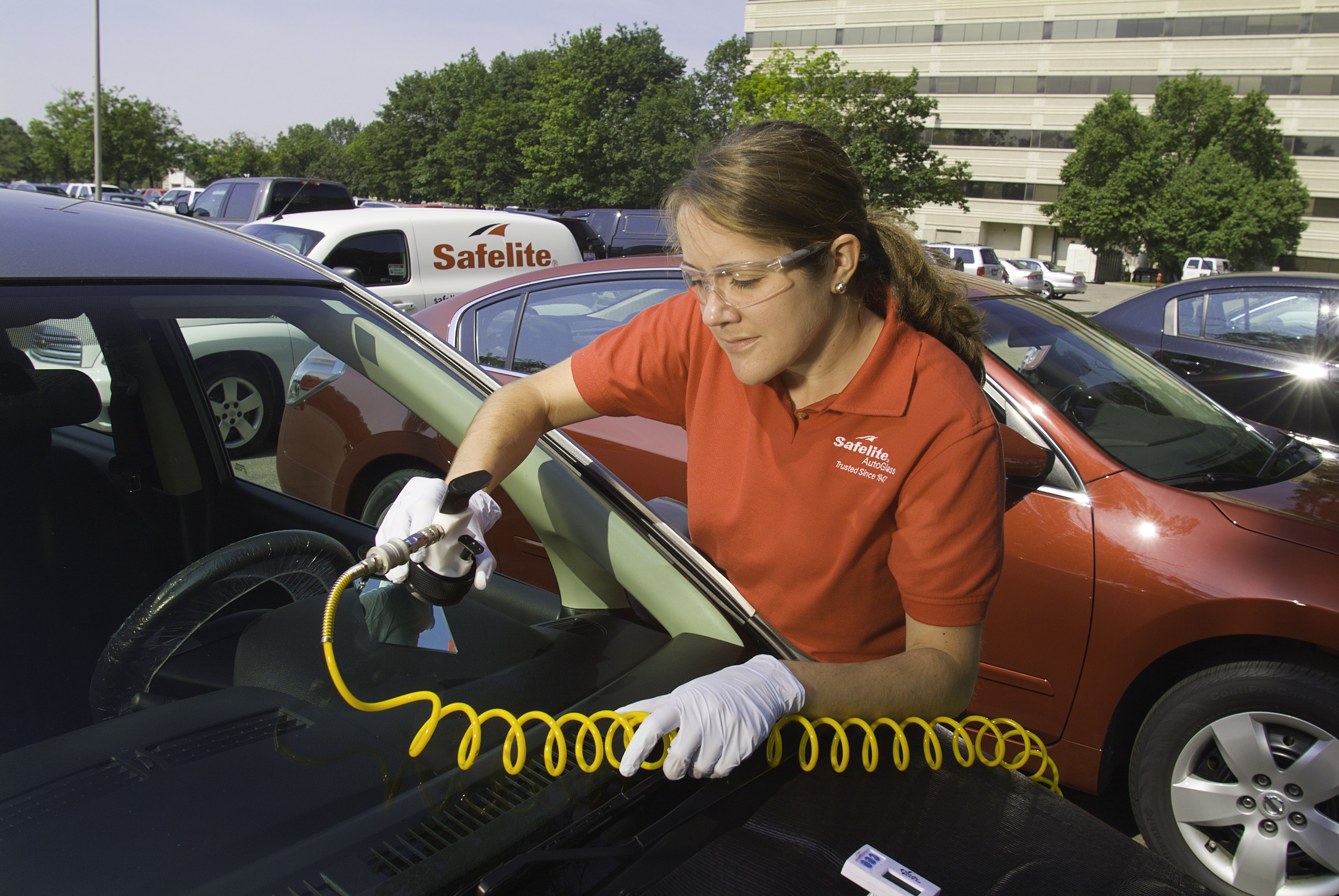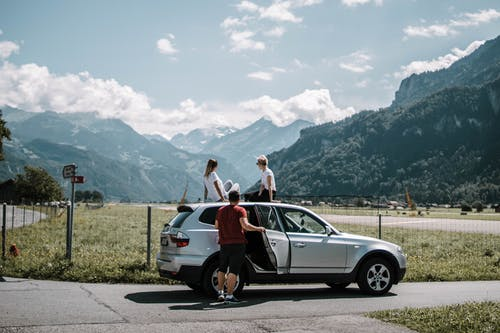A broken windshield this week on our mega summer road trip had us thinking about the importance of windshields. Not something that typically keeps us up nights. But, did you know that most auto safety experts rate your windshield as the third most important safety component on your vehicle, right behind seat belts and airbags? Your windshield not only ensures that the passenger-side airbag deploys properly, it also helps maintain the structural integrity of your car in a rollover. We had no idea.
Before heading out for your road trip, here are some facts you should consider if your windshield is cracked or chipped. We consulted with Safelite AutoGlass® for their expert advice. Full disclosure: we did not receive any discount on our windshield or any compensation for providing these tips.
1. Should I have my chip checked out?
Yes. It’s important you don’t ignore a chip, which could spread into a larger crack at any time, often when you are least expecting it. The most common causes of a chip spreading include sudden stresses, such as driving over pot holes or speed bumps; swift changes in temperature from using the windshield defroster in cold weather or the air conditioner in hot weather; high heat by itself; or just the accumulation of stress and vibrations from everyday driving.
Fortunately, if a chip is smaller than a dollar bill, it can likely be repaired. Repairing a windshield maintains the original factory seal, and it is often a safe and economical alternative to a full windshield replacement.
Scheduling a windshield chip repair is easy! Many companies offer mobile service (we found it easily while on the road) wherever your car is – often within 24 hours of your initial call.
2. How does a repair work and how long does it take?
The process works like this: A vacuum is created over the damaged area. The air and moisture is removed and the resin is injected penetrating and filling the finest micro cracks. Safelite uses an exclusive resin in the repair process that’s been proven to be the best on the market by independent labs. The next step is that UV light is used to harden the resin. This process is typically completed in just 30 minutes.
Be sure to ask about a warranty, and if you lease your car, ask if they company can guarantee the repair will pass lease turn-back and state vehicle inspections.
3. What if a repair is not an option?
If the damage cannot be repaired, a replacement is necessary. The cost of a replacement ranges depending on the make and model of the vehicle. It’s important to note that all vehicle glass installed in the U.S. must pass National Highway Traffic Safety Administration baseline standards.
4. How do I choose the best service provider for a replacement?
When selecting an auto glass shop, consider their expertise. This includes highly qualified technicians and a commitment to customer service. Consider asking the company about the training of their technicians. Safelite AutoGlass technicians go through several months of intensive training. Then, they apprentice with another service technician to gain additional practical knowledge and hands-on experience. Technicians can only work solo when training is complete and they have received certification.
5. How long should I wait before I drive my car?
Depending on weather conditions, most vehicles will be safe to drive between 45 minutes to two hours after the installation. Your technician will advise you on safe drive-away times.





